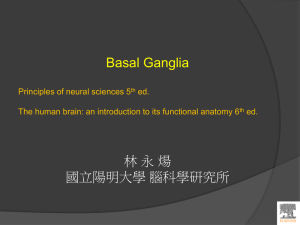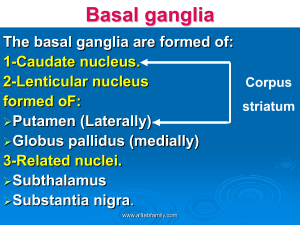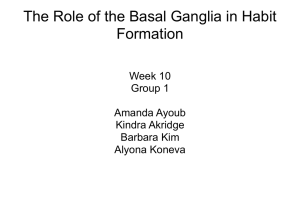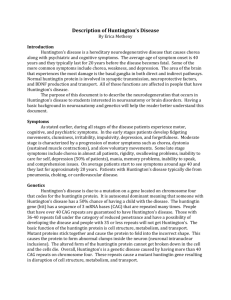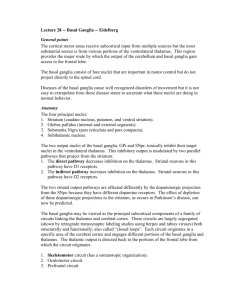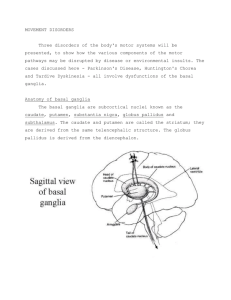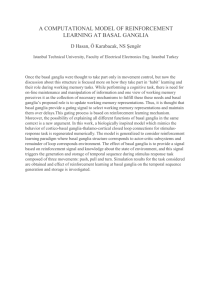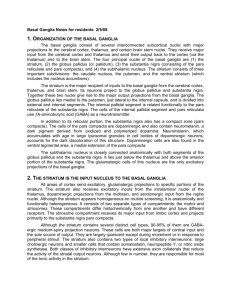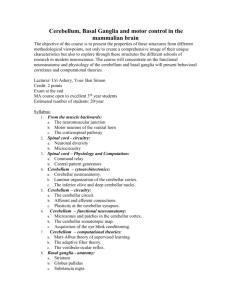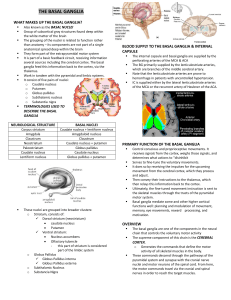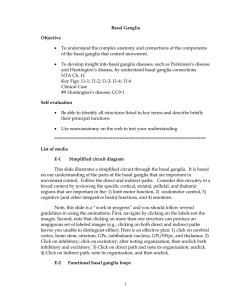Basal Ganglia
advertisement
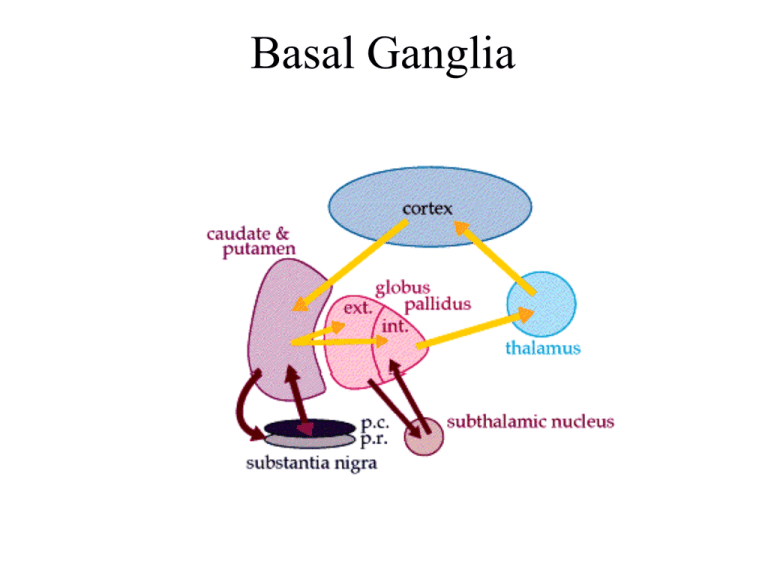
Basal Ganglia Main components of basal ganglia: caudate nucleus, putamen, globus pallidus, subthalamic nucleus, and the substantia nigra. Nucleus accumbens and ventral pallidum are also often considered to be closely associated with the basal ganglia. Striatum receives all inputs to basal ganglia system. Caudate nucleus has a head, body and tail. Anterior and ventral part of the putamen fuses with the head of the caudate forming the ventral striatum, most of which consists of the nucleus accumbens. Globus pallidus has an internal and external division. Inputs To the Basal Ganglia System Nearly all inputs arrive at the caudate and putamen. All outputs go out from the internal segment of globus pallidus or from substantia nigra pars reticulata. Parallel pathways in BG function in general motor control, eye movements, cognitive functions, and emotional functions. Inputs: 1) Cerebral cortex: all lobes have projections to striatum; most are (+) and use glutamate. 2) Substantia nigra pars compacta: to striatum; (+) and (–) connections, uses dopamine. 3) Thalamus (intralaminar nuclei): to striatum; (+) and use glutamate. 4) Raphe nuclei: to BG use serotonin. Intrinsic Basal Ganglia Connections 1) Direct pathway from the striatum to the globus pallidus internal segment and substantia nigra pars reticulata. 2) Indirect pathway from striatum to GP external segment to subthalamus, to GP internal segment to VA/VL thalamus. Net effect of direct path is excitation of thalamus = facilitation of movement Net effect of indirect path is inhibition of thalamus = inhibition of movement Outputs of the Basal Ganglia System 1) Substantia nigra pars reticulata: to VL and VA thalamus; (-) using GABA. 2) Globus pallidus internal segment: to VL and VA thalamus; (-) using GABA. VL/VA thalamus carries BG output to frontal lobe premotor cortex, supplementary motor cortex, and primary motor cortex. SN and GP also project to MD thalamus (limbic connections). SN and GP also project to pontomedullary RF to modulate reticulospinal tract. SN projects to superior colliculus to modulate tectospinal tract. By these paths BG control both medial and lateral motor systems.
